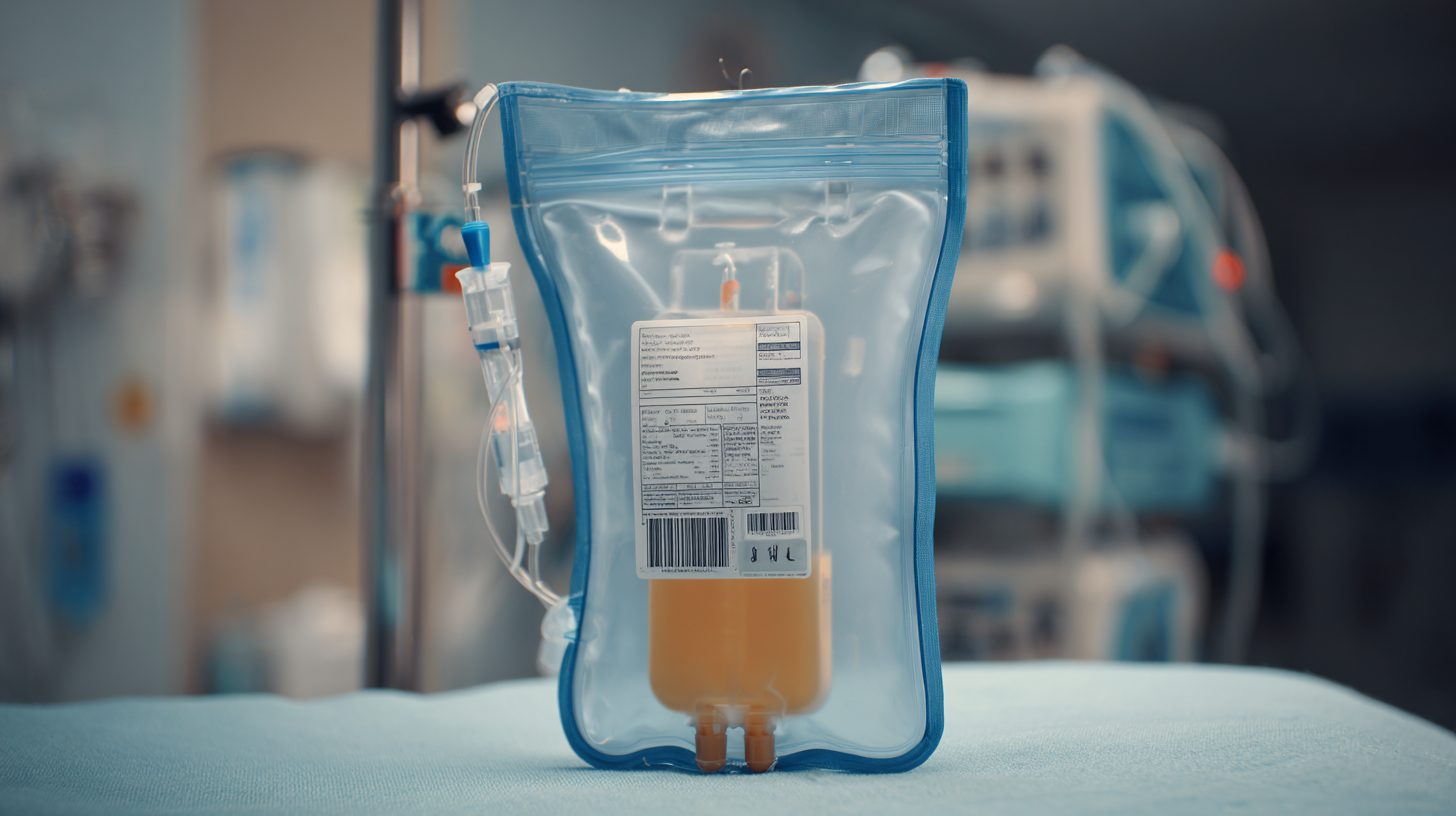
Ultimate Guide to Selecting the Best Catheter Bag for Your Needs
Choosing the right catheter bag is a critical decision for individuals requiring urinary management. According to a study published in the Journal of Urology, approximately 15 million individuals in the United States utilize catheters, making the selection of appropriate catheter bags essential for both comfort and hygiene.

The variety of catheter bags available on the market can be overwhelming, with options varying in size, material, and functionality.
The wrong choice can lead to complications such as leakage, infection, and skin irritations. Therefore, understanding the features and benefits of different catheter bags is crucial for enhancing quality of life, ensuring ease of use, and preventing potential health issues.
This ultimate guide aims to simplify the selection process, offering insights into the various types of catheter bags available, ensuring you make an informed choice tailored to your specific needs.
The Importance of Choosing the Right Catheter Bag for Health and Comfort
When it comes to maintaining health and comfort for individuals using catheters, selecting the right catheter bag is crucial. A well-chosen catheter bag can significantly enhance one’s quality of life, reducing the risk of complications such as infections and skin irritations. It’s essential to consider factors such as bag size, material, and drainage options. A bag that is too small may lead to frequent changes, while one that is too large can be cumbersome and uncomfortable.

Tips: When selecting a catheter bag, ensure it is made from material that is both breathable and hypoallergenic to prevent skin irritation. Look for ergonomically designed bags that can be worn discreetly under clothing, offering comfort without compromising on accessibility. Additionally, consider the ease of emptying and cleaning the bag—this can make a significant difference in daily routine and hygiene.
Furthermore, consult with healthcare providers to find recommendations tailored to individual needs. They can help identify specific features that may be beneficial, such as anti-reflux valves or odor control features. Ultimately, ensuring that you feel confident and comfortable with your choice can pave the way for a healthier, more satisfying experience with catheter use.
Types of Catheter Bags: Finding the Best Fit for Your Lifestyle
When selecting the best catheter bag, understanding the different types available is crucial to finding a solution that fits your lifestyle. There are primarily two categories: leg bags and bedside bags. According to a report by the Urology Nursing Journal, leg bags are preferred for daytime use due to their discreet design and mobility, allowing users to maintain an active lifestyle. They typically hold between 500 to 1000 ml, making them suitable for individuals who can manage smaller volumes throughout the day.
On the other hand, bedside bags are ideal for nighttime use, featuring a larger capacity of up to 2000 ml. The American Urological Association highlights that these bags are designed for comfort during sleep, reducing the need for frequent emptying. Users can assess their needs based on their daily routines and level of activity, ensuring they choose a catheter bag that enhances their quality of life, whether they require something portable for daytime or a more accommodating option for overnight use. With diverse designs and features available, selecting the right catheter bag is essential for both convenience and comfort.

Materials and Features: What to Look for in a Catheter Bag
When selecting a catheter bag, understanding the materials and features is crucial to ensure comfort and functionality. A report from the Global Catheter Market reveals that silicone and PVC are the most commonly used materials, with silicone bags often preferred for their biocompatibility and reduced risk of irritation. Silicone catheter bags typically have a lower friction coefficient, allowing for smoother insertion and minimizing discomfort during use.
Another essential feature to consider is the type of drainage valve. According to industry studies, overflow prevention and anti-reflux mechanisms significantly reduce the risk of urinary tract infections (UTIs), which affect approximately 25% of catheter users. The choice of bag size and capacity is also pivotal; a larger capacity bag can accommodate users with high urine output, while a smaller, discreet option may be better for those seeking portability.
Lastly, look for features such as odor control technologies and easy-to-read volume measurement markings. Research has shown that bags incorporating these features can enhance user experience and improve overall quality of life. By focusing on the right materials and features, you can optimize your catheter bag selection for your specific needs.
Understanding Capacity and Drainage Options in Catheter Bags
When selecting the best catheter bag for your needs, understanding capacity and drainage options is crucial. Catheter bags come in various sizes, typically ranging from 500ml to 2000ml, which cater to different individuals' needs based on activity level, mobility, and usage frequency. A larger capacity bag may be ideal for those who prefer fewer changes throughout the day, while a smaller bag may be preferable for active individuals who require a more discreet and portable option.
In addition to capacity, drainage options play a vital role in the usability of catheter bags. There are two primary types: leg bags designed for daytime use and night bags meant for overnight drainage. Leg bags are generally smaller and can be conveniently strapped to the leg for discreet wear, while night bags are larger and often come with a higher drainage capacity, accommodating the user for extended periods without the need for frequent emptying. Understanding these options will help users select a catheter bag that aligns with their lifestyle and comfort needs.
Capacity Comparison of Catheter Bags
Future Innovations in Catheter Bag Design and Functionality
As we delve into the future of catheter bag design and functionality, it is essential to recognize the rapid advancement in medical technology. Innovations are expected to lead to more comfortable, efficient, and user-friendly catheter bags. Anticipated features include enhanced materials that promote breathability and reduce friction, making them more suitable for long-term wear. Additionally, smart technology will likely play a role in monitoring and managing catheter use, providing users with real-time data and alerts, thus improving safety and convenience.
Tips for selecting the best catheter bag include considering the bag's capacity and the user's lifestyle. For active individuals, a discreet, lightweight design with a high absorption capacity is crucial. Moreover, assess the ease of maintenance and whether the bag provides a secure fit. Lastly, always consult with healthcare professionals for personalized recommendations tailored to specific medical needs and conditions.
As innovations continue to emerge, staying informed about the latest products will ensure users benefit from the best options available. Regularly reviewing advancements in design and functionality will not only improve individual comfort but also enhance overall health outcomes in catheter management.
